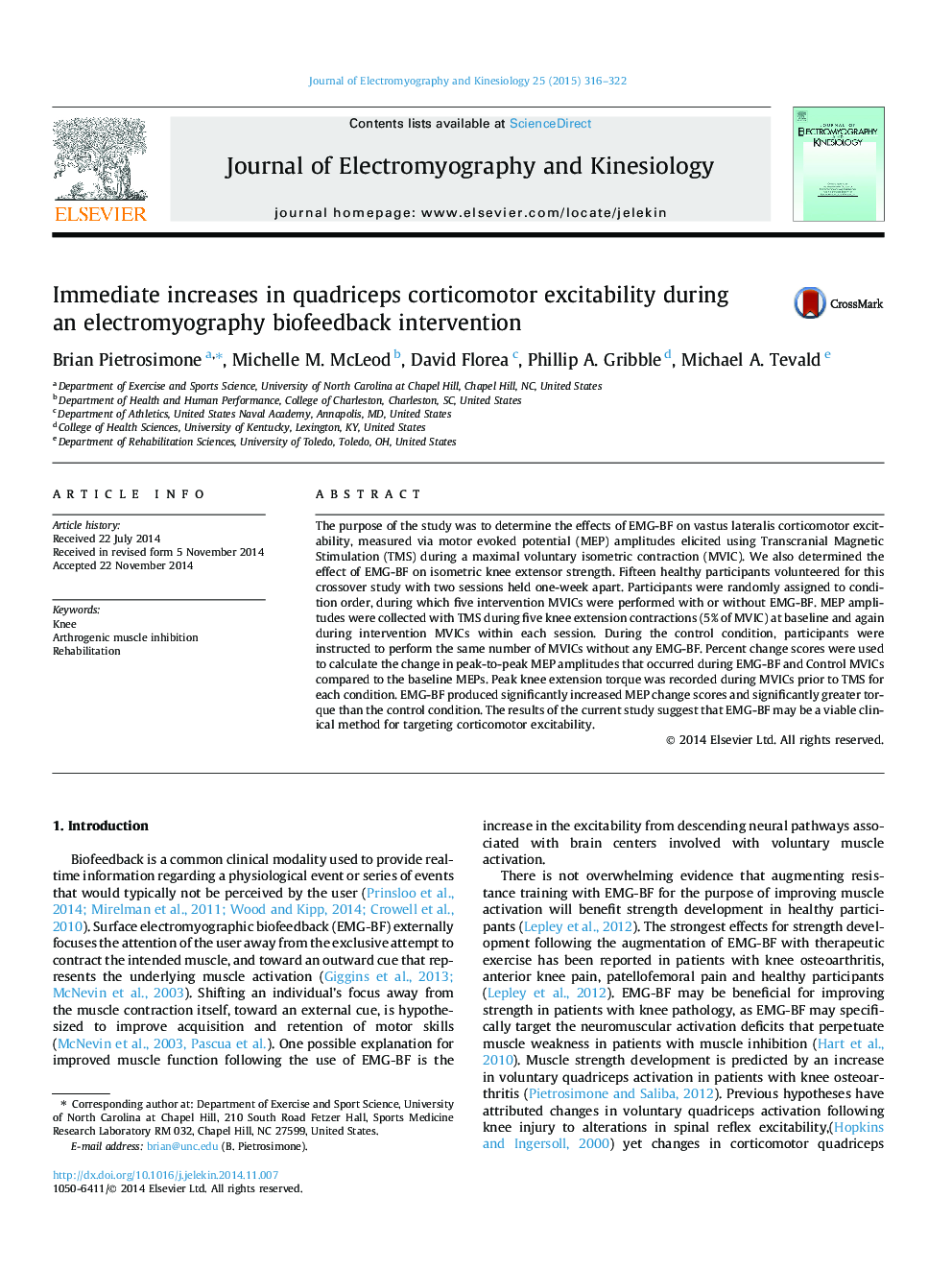| Article ID | Journal | Published Year | Pages | File Type |
|---|---|---|---|---|
| 4064691 | Journal of Electromyography and Kinesiology | 2015 | 7 Pages |
The purpose of the study was to determine the effects of EMG-BF on vastus lateralis corticomotor excitability, measured via motor evoked potential (MEP) amplitudes elicited using Transcranial Magnetic Stimulation (TMS) during a maximal voluntary isometric contraction (MVIC). We also determined the effect of EMG-BF on isometric knee extensor strength. Fifteen healthy participants volunteered for this crossover study with two sessions held one-week apart. Participants were randomly assigned to condition order, during which five intervention MVICs were performed with or without EMG-BF. MEP amplitudes were collected with TMS during five knee extension contractions (5% of MVIC) at baseline and again during intervention MVICs within each session. During the control condition, participants were instructed to perform the same number of MVICs without any EMG-BF. Percent change scores were used to calculate the change in peak-to-peak MEP amplitudes that occurred during EMG-BF and Control MVICs compared to the baseline MEPs. Peak knee extension torque was recorded during MVICs prior to TMS for each condition. EMG-BF produced significantly increased MEP change scores and significantly greater torque than the control condition. The results of the current study suggest that EMG-BF may be a viable clinical method for targeting corticomotor excitability.
